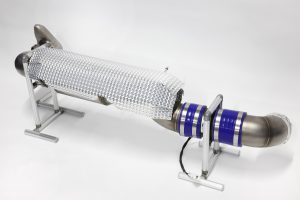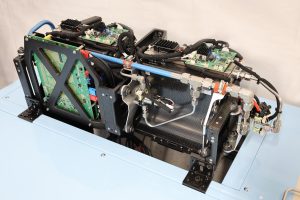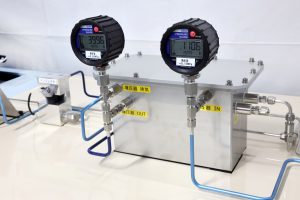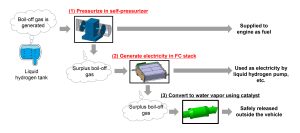Toyota explores further possibilities for liquid hydrogen power
Toyota has developed a concept model that explores how hydrogen gas generated while driving – “boil off gas” (vaporised hydrogen) – can be used, potentially increasing the efficiency of liquid hydrogen as an engine fuel. The company is seeking partners to take on the challenge of developing the technology together.
The concept was showcased last weekend at the final round of the 2024 ENEOS Super Taikyu race series in Japan, where the field included a GR Corolla running on liquid hydrogen. Toyota will continue to use the challenging world of motorsports to refine its cars and the skills and talents of people, together with its partners, to achieve carbon neutrality.
The technology principles
Liquid hydrogen has a higher density than gaseous hydrogen, but while this means a greater amount can be stored in a tank of the same capacity, it presents the issue of “boil-off”. This is a problem for all liquid hydrogen systems, where the fuel stored in the tank evaporates due to natural heat entering from the outside. Until now, the boil-off gas generated in the tank while driving has been released into the atmosphere without being used.
The new concept model shows how the boil-off gas might be used. Although still in the concept stage, this technology could improve the energy efficiency of the entire liquid hydrogen system by recovering and using the boil-off gas as energy.
Reusing boil-off gas as fuel
Toyota is working on the development of technology to produce reusable fuel by sending boil-off gas released from liquid hydrogen in the tank to a self-pressuriser – a device that increases pressure without relying on external energy. The boil-off gas can be converted back to usable hydrogen fuel for the engine by applying pressure, but increasing the pressure sufficiently usually requires energy, such as electricity. The self-pressuriser featured in the Toyota concept uses the pressure of the boil-off gas to increase pressure by two to four times, sufficient to produce reusable fuel without using additional energy.
Generating electricity with boil-off gas
During the pressurisation process, a certain amount of surplus boil-off gas is still released. This is fed into a small Toyota fuel cell stack, where it produces electricity through a chemical reaction. The electricity generated can be used to power components such as the liquid hydrogen pump. If realised, it will be possible to use boil-off gas to produce supplementary electricity equivalent to the amount generated by the alternator, leading to an improvement in energy efficiency.
Safe release of surplus boil-off gas
Boil-off gas that is not used in the electricity generation process is converted into water vapour through a catalyst and safely released outside the vehicle.
ENDS





